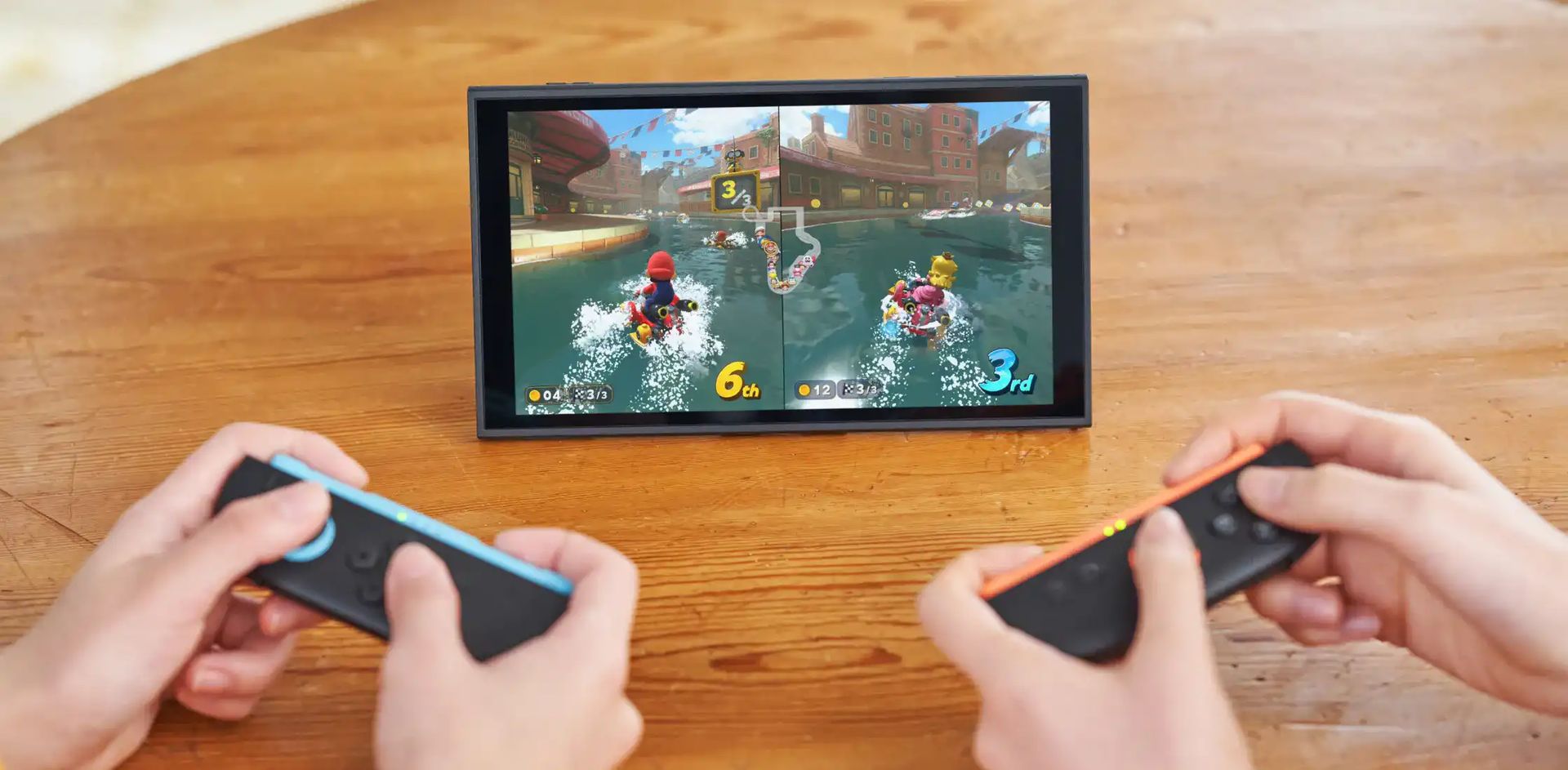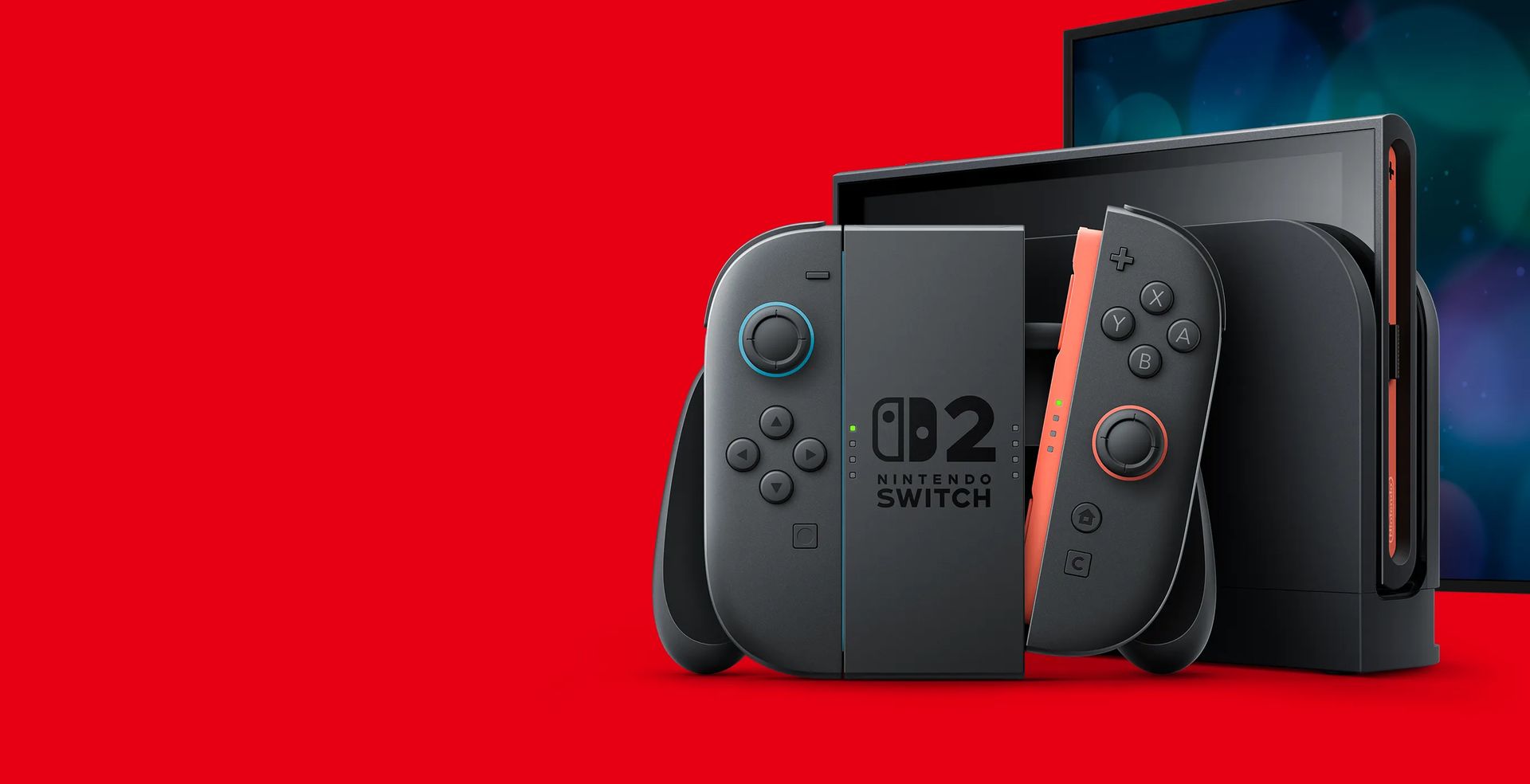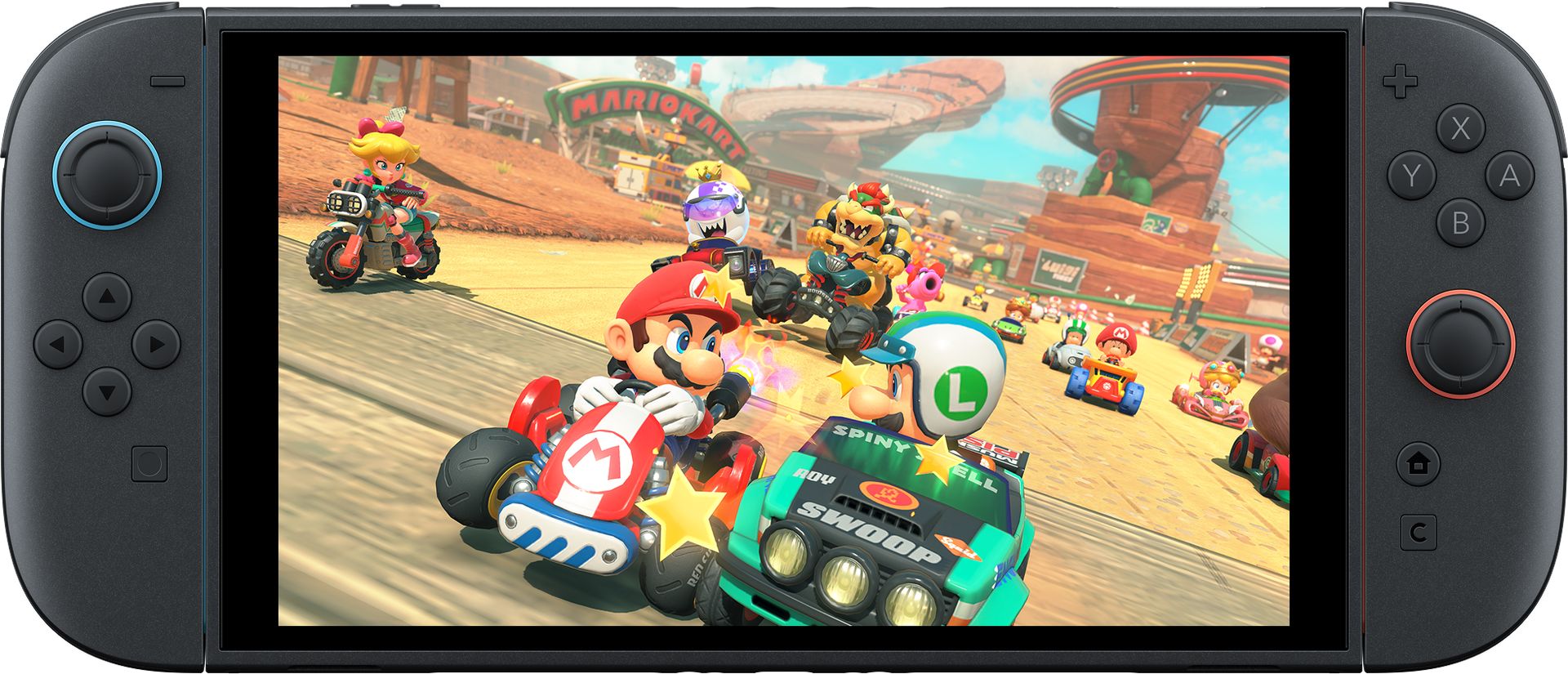Nintendo Switch 2 review: We touched it, played it, now we want it
 We went in expecting an upgraded Switch. We walked out wondering how we ever settled for the original. Nintendo Switch 2 isn’t just a new console—it’s a redefinition of what handheld gaming can feel like in 2025. We held it. We raced in it. We fought through Zelda in 4K. And after four hours with it, it’s safe to say: we’re not looking back.
Less toy, more tech
We went in expecting an upgraded Switch. We walked out wondering how we ever settled for the original. Nintendo Switch 2 isn’t just a new console—it’s a redefinition of what handheld gaming can feel like in 2025. We held it. We raced in it. We fought through Zelda in 4K. And after four hours with it, it’s safe to say: we’re not looking back.
Less toy, more tech
The first surprise hit us before we even powered it on. The Switch 2 looks… mature. The playful neon has been traded for a blacked-out base with orange and blue accents. It’s still unmistakably Nintendo, but now it means business. The rounded edges and that new 7.9-inch display give it a sleeker profile—and it somehow still feels lighter than the original.
Magnetic magic: Joy-Con 2We didn’t expect to obsess over how the Joy-Cons attach, but here we are. Ditching the old rail system for magnetic connectors was genius. They snap in with a click that’s more satisfying than it has any right to be. Ejecting them? Just press a hidden rear button and pull. Easy. We tested their strength mid-Mario Kart and they held firm.
In-hand, the Joy-Con 2s are everything the first-gen wasn’t: comfy, responsive, and finally, not digging into our palms. The analog sticks felt smoother, and while Nintendo didn’t officially confirm Hall effect sensors, we sensed zero drift and all control.
The Pro Controller 2 is a quiet beastWe picked up the new Pro Controller and instantly forgot every other controller. These sticks are silky. The buttons are snappy. Triggers? Still digital, but fast as hell. It’s like Nintendo built it for competitive fighting games—and yes, we tested that theory with Street Fighter 6. No lag, no excuses.
That screen, thoughYes, it’s LCD—not OLED—but in motion? You won’t care. The 120Hz refresh rate, HDR support, and improved brightness make every game feel more alive. We loaded up Zelda: Tears of the Kingdom and were stunned at how crisp it looked. Side by side with the original? No contest.
 The Switch 2 looks… mature.
Performance: Finally, a Nintendo that keeps up
The Switch 2 looks… mature.
Performance: Finally, a Nintendo that keeps up
It’s fast. That’s the TL;DR. Load times are brief. Menus snap. Games like Cyberpunk 2077 and Metroid Prime 4 actually run at respectable frame rates. Docked, we were playing Zelda: Breath of the Wild at 4K/60fps—and it felt like a dream we didn’t know Nintendo could deliver. Handheld? Still 1080p, still HDR, and still capable of 120fps in supported titles.
Mouse mode is weird and weirdly goodOne of the wildest things we tried was mouse mode in Metroid Prime 4. Set the Joy-Con down, move it like a mouse, and the game tracks your aim like it’s 2005 on a gaming PC. Then we just picked it up again, and bam—back to stick controls. Seamless. We even rubbed it on our pants leg just to test responsiveness. It worked. And yes, it felt weird.
Old games, new tricksGameCube emulation is finally here via Switch Online Expansion Pack, and we took F-Zero GX and Wind Waker for a spin. Wind Waker looked great. GX, not so much—dropped frames were noticeable. Hopefully that gets fixed. On the upgrade front, Switch 2 Editions of classic games like Zelda and Kirby felt significantly enhanced, but yes, they cost more unless you’re on Nintendo’s Online Plus plan.
 We tested Joy Con 2 and their strength mid-Mario Kart and they held firm.
New social features, still a bit of a mystery
We tested Joy Con 2 and their strength mid-Mario Kart and they held firm.
New social features, still a bit of a mystery
We didn’t get to test Game Chat with a camera plugged in, but the concept is promising. A kid-safe, drop-in video hangout during games? That’s a huge win if Nintendo nails it. The mic filters noise, the dock cools itself with a fan, and the included stand works like a charm. But why does Welcome Tour, a glorified tutorial, cost money? That one baffled us.
So… Should you buy it?It’s $450. The games aren’t cheap. Accessories add up. And yet—we still want one. Because the Switch 2 isn’t just an upgrade. It’s a platform built for the next generation of Nintendo games. If you skipped the OLED or want the best handheld experience Nintendo’s ever offered, this is it. For casuals? Wait and see. For us? Our preorder’s already in.
What we loved:- 4K visuals and 120Hz handheld gaming
- New Joy-Con feel like premium gear
- Pro Controller 2 is an absolute unit
- Big game lineup right out the gate
- Mouse mode + camera support are surprisingly fun
- $450 base price + paid upgrades
- No analog triggers—still digital
- Performance hiccups in retro emulation
- No OLED (yet)
Verdict: It’s the Switch we always hoped for. And it’s finally real.
Switch 2 launches June 5. We’ll be covering the next wave of games—and we’ll tell you exactly which ones justify the upgrade cost.
